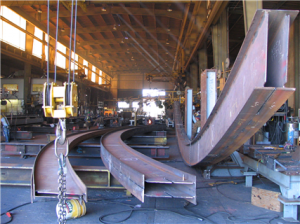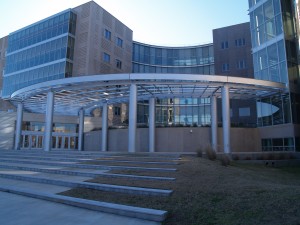Specialty subcontractors who curve steel often enter into a dialogue with their customers about beam bending, channel bending and tube bending. The results of these discussions can determine which steel sections to use in a project and what the costs might be. And the earlier that these conversations take place between the specialty subcontractor, the structural steel fabricator, the engineers and architects—indeed everyone who is involved—the better. Sometimes the dialogue leads to unusual solutions.
For example, at the San Jose International Airport, one solution for roof supports called for two beams to be welded together. This fabrication required a profile tolerance of +/- 1/16 of an inch to ensure that the beams curved by the rolling house could be welded together by the steel fabricator.
Another requirement called for bending aluminum channels. When no channel was found large enough, the solution was to cut one flange off on each of two 12in channels and then to weld the resultant angles together to make a 24in channel. This channel was then curved for a canopy.
A recent inquiry came to a bender/roller for bending 12 x 8 tubing against the strong axis to a 7ft radius—a tight bend—for the entry to a stadium. The project engineer at the rolling house discussed bending the tube on a large section bender, bending two 6 x 8 tubes against the weak axis that would be stacked one on the other, or using heat induction bending. The structural steel fabricator is going back to discuss the options with his customers.









